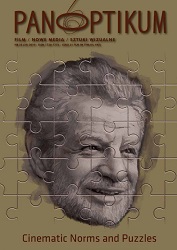Norms, Forms and Roles: Notes on the Concept of Norm (Not Just) in Neoformalist Poetics of Cinema
Norms, Forms and Roles: Notes on the Concept of Norm (Not Just) in Neoformalist Poetics of Cinema
Author(s): Radomir D. KokešSubject(s): Aesthetics, Film / Cinema / Cinematography, History of Art
Published by: Uniwersytet Gdański
Keywords: Norms; forms; roles; cinematography; neoformalist poetics approach; aesthetics; film studies; stylistic history of cinema; cinematic phenomena;
Summary/Abstract: Norm as a tool of structural analysis and writing of aesthetically based history is a concept designed by Czech structuralist Jan Mukařovský. For several decades, the American film scholars David Bordwell and Kristin Thompson have been handling this notion. After a review of the original concept, the article follows three main goals: (1) The broadest aim is to reconstruct specific roles the concept played in the process of establishing the so-called neoformalist poetics approach. By returning to Mukařovský’s starting points, we should be able to more clearly understand how his concept of norm was employed and transformed by neoformalist poeticians in order to solve the problems of film studies as an academic discipline on the one hand and problems in formulating concrete research projects on the other. (2) The more particular goal is to point out certain shifts in neoformalist poeticians’ handling of the concept of norm after they formulated the classical Hollywood cinema model. The concept of norm was initially used by them as a tool for bottom-up research of the stylistic history of cinema, as a hollow category for its unbiased explanation. However, consequently it has also become a somewhat filled category applied rather topdown as an interpretative background for assessing its alternatives. (3) The final goal is to answer the question why this re-assessment and interrogation of roles played by norm in neoformalist poetics matters now. By returning to the original concept of norm and by the treatise of its changing functions for film study, the article aims to remind us of the usefulness and flexibility of this research tool. As is suggested in the last part of the article, we still know too little about historical poetics of so-called regional cinemas. If we want to understand them properly, the concept of norm is highly worthwhile – but only if is reached by bottom-up research as the hollow category for the unbiased explanation of certain cinematic phenomena.
Journal: Panoptikum
- Issue Year: 2019
- Issue No: 22 (29)
- Page Range: 52-78
- Page Count: 27
- Language: English

